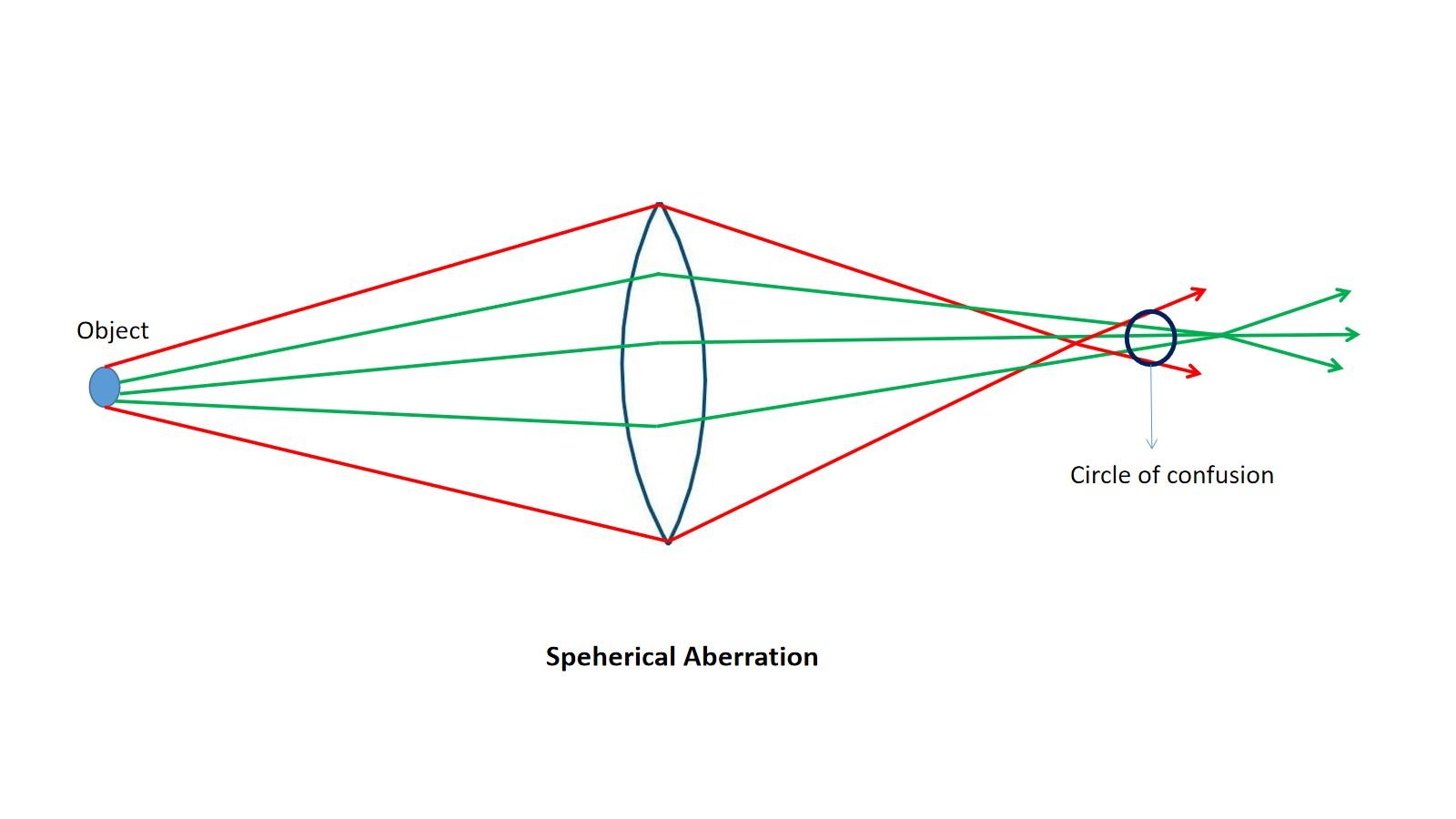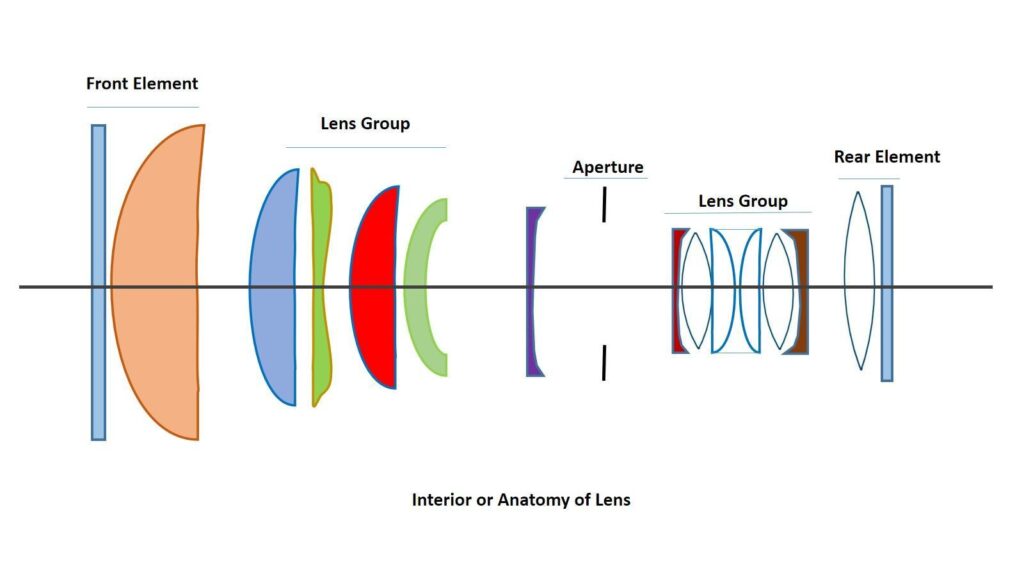Today’s masked basics of photography part V topic is the aberration of the lens. Let’s unmask the hidden basics. Aberration in the lens means an imperfection of lens focusing and producing an imperfect image. It occurs because light rays fail to converge in a single point.
Despite the immense development in camera and lenses along with combined group of lenses element, the aberration still persists. But the deviation is decreasing day by day due to constant development of lens shape, lens coating and combing group of elements of lenses in the R&D section of big houses like Nikon, Canon, Sony and so on. Finally, the digital darkroom or post-production software helps to eliminate the blurriness of an image.
I hope you do not forget about the autofocus mechanism, various lenses, focal length, and razor-sharp focus articles.

There are multiple types of aberration persist, which directly affect the image. They can affect sharpness, focus, magnification, distortion, and color in images. As a result, they prevent the accurate reproduction of images.
I know a question arise in your mind. Is it possible to eliminate aberration completely from lenses?
The answer is NO till date. Correcting a type of aberration may create more problematic in other type of aberration. The serious photographers know the weakness of various types of aberration and design their composition in such a manner so that they can avoid maximum types of lens aberrations.
Types of aberration in lens
Spherical Aberration:

The elements in the lens cause light to converge at different places on the sensor. The lens will refract light that enters near the edge more than light that enters near the center.
Effect: image resolution, clarity, focus and blurriness of image

Solution: Aspherical lens is used. If it is absent in your camera lens then use smaller aperture.
Comatic or Coma Aberration:

This aberration occurs when a single point of light enters a lens at an angle at its edge, rather than straight on at the center of the lens. Unable to focus angular light rays at the same point, point light sources flare out from the point.
Effect: Creating a comet-shaped highlight, rather than a circular one.
Solution: Use small aperture.
Tangential and Sagittal Astigmatism:

Two planes at right angles to one another passing through the optical axis are the meridian plane and the sagittal plane, the meridian plane being the one containing the off-axis object point. Rays not in the meridian plane, called skew rays, are focused farther away from the lens than those lying in the plane. In either case, the rays do not meet in a point focus but as lines perpendicular to each other.
Effect: Intermediate between these two positions the images are elliptical in shape.
Solution: Use small aperture.
Curvature of Field:

The image of a plane object perpendicular to the optical axis will lie on a parabolic surface called the Petzval surface (after József Petzval, a Hungarian mathematician). Flat image fields are desirable in photography in order to match the film plane and projection when the enlarging paper or projection screen lie on a flat surface. Distortion refers to deformation of an image.
Effects: There are two kinds of distortion, either of which may be present in a lens: barrel distortion, in which magnification decreases with distance from the axis, and pincushion distortion, in which magnification increases with distance from the axis.

Solution: Rectify the problem in post production and perfect focal length based lenses. If you use zoom lens, experience is required.
Chromatic Aberration:
It is the failure of a lens to focus all colours in the same plane. It is also known as color fringing. Chromatic aberration happens when the colors are incorrectly refracted (angle, curl, bent etc.) by the lens and fall in different focal points individually. The distinct colors fails to combine themselves to produce a single source of light beam.
Note


A single light beam is made of three main colors, R = Red, G = Green and B = Blue. If you pass light beam through one side of the prism, the VIBGYOR is distinctly visible on the other side. Second picture clearly shows you the combination of colors using RGB as the prime one.
Two types of chromatic aberration may occur in the image. a) Longitudinal chromatic aberration: the refractive (bent) light index is least at the red end of the spectrum and the focal length of the lens in the air will be greater for red and green than for blue and violet. b) Lateral chromatic aberration: magnification is affected by chromatic aberration, being different along the optical axis and perpendicular to it.



Solution: Go for wide focal length, refrain to put the image at the edge of the frame, use small aperture or solve the problem in post production.
Laminated Diffractive Optical Elements

Cause of Chromatic Aberration
Unmask another basic of photography for reducing chromatic aberration of lens. Chromatic aberration is caused by refraction on one side and diffraction in the other side. It produces stray lights in the ultimate image, captured by the image sensor.
Two laminated diffract optical elements are aligned with a precision of a small micrometers. It is combined with another refractive convex lens and eliminate chromatic aberration. At present these elements are vastly used in sport photography lenses (telephoto).
Extra-low Dispersion (ED) Lens
When you go through the manual of lens you can find a bunch of optical elements are available in it. The development based on ED lens are LD (Low Dispersion), SLD (Special Low Dispersion), ELD (Extra-Low Dispersion), and ULD (Ultra Low Dispersion) are reducing the color fringing or reducing chromatic aberration. These types of lenses are responsible for making the focused image in a slightly different plane.
Therefore a loss of contrast, resolution, and perceptual loss of image sharpness. Current generation ED-type optical components are made with rare-earth elements including zirconium dioxide, calcium fluoride, titanium dioxide, and other earthly exotica that are easier to form and polish.
The chemical makeup of ED glass compresses the distance between each color’s plane of focus, resulting in greater color saturation, contrast and image detail. ED-type lenses also perform better in terms of light transmission, which makes for quicker focusing times and brighter images in your viewfinder.
Nikon uses the coating in ED lens for reducing green and magenta colors which is commonly found in 300mm and longer telephoto lenses. Canon uses calcium fluorite based coating for decreasing the chromatic aberration.
Silent Wave Motor (SWM)


It helps to focus an object much faster with very low noise. The pro camera body and al l lenses with AF-S tagged have SWM technology. An SWM essentially converts traveling waves or vibrations into rotational energy to rotate and hence focus the optics on the lens. This results in smooth, quiet, and faster auto-focusing. This is useful when shooting sports, wildlife, stage photography, or fast-moving subjects.
There are two types of SWM.
- Ring SWM: A metal ring on the motor vibrates at a higher frequency. These waves transfer an energy and helps to focus very fast and accurately. It is expensive.
- Micromotor SWM: It is just like a conventional electric motor with teeth to focus the object. The entry level camera have micromotor SWM and takes longer time to focus than Ring SWM.
AF-S 17-35mm f/2.8D IF-ED
Nikon AF-S DX Zoom-Nikkor 55-200mm f/4-5.6G
Nikon 18-200mm f/3.5-5.6 G AF-S VR DX Nikkor
Each major lens manufacturer has employed a version of SWM in their lenses, and they all call it something different. For example:
Canon – Ultra Sonic Motor (USM) .
Sigma – Hyper Sonic Motor (HSM)
Tamron – Ultra Silent Drive (USD)
Minolta, Sony- Super Sonic Motor (SSM)
Olympus – Supersonic Wave Drive (SWD)
Pentax – Supersonic Dynamic Motor (SDM)
Panasonic – Extra Silent Motor (XSM)
Tokina – Silent Drive Module (SDM)
Anatomy of lens groups available in a lens are as follows:

I think you can easily identify now the concave, convex, and other formats of lenses and their working principles. Want to purchase a lens? Read carefully the review of the lens, group elements, and feedback from the amateur and expert photographers. If you have any confusion about the lens, group elements, explore clickstory.in and open the masked basics of photography (part I to V) to learn again for your benefit.
Do you want to read the previous articles on masked basics of photography? Click the following links and it will be the responsibility of clickstory.in to place you in the right article(s).
Masked Basics Of Photography – Part I
Masked Basics Of Photography – Part II
Masked Basics Of Photography – Part III
Masked Basics Of Photography – Part IV
Acknowledgement: source of some pictures taken from internet

So many hidden secret. thank you so much
Awesome
an useful tutorial
Awesome article
Nice.